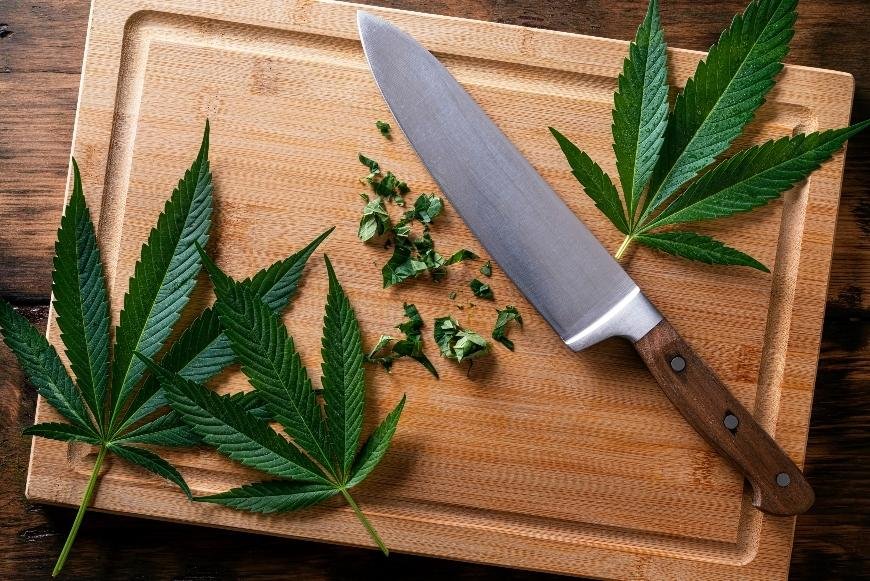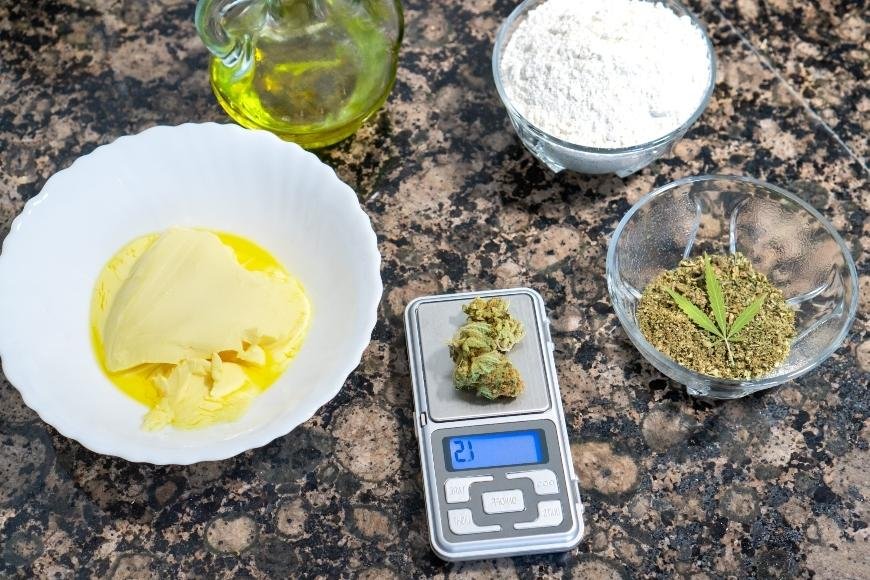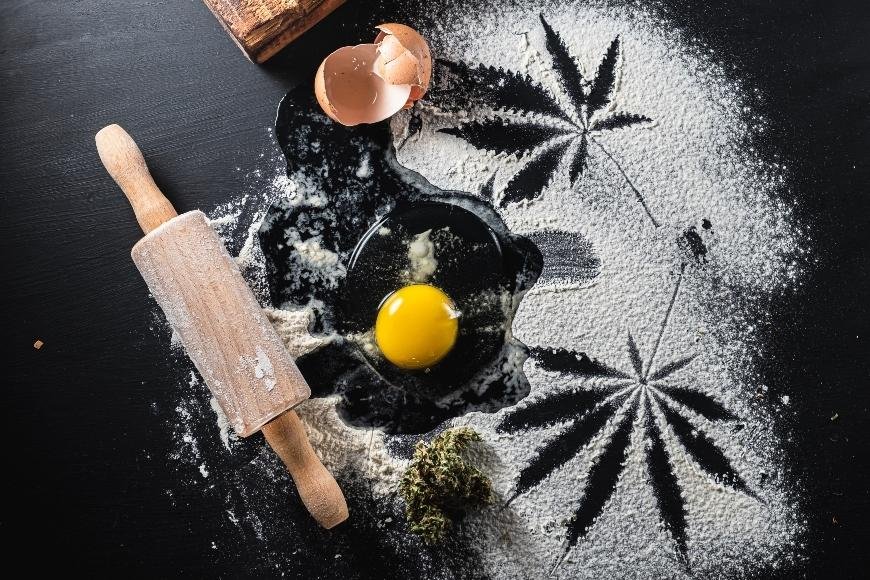The Most Common Cannabis Cooking Mistakes
Discover the Most Common Cannabis Cooking Mistakes and learn how to avoid them for perfect edibles, ensuring taste, potency, and safety every time.

When it comes to cooking cannabis edibles, there are several common mistakes that can make the difference between a delightful treat and a disappointing experience. In this blog post, we'll look at how to avoid the most frequent errors in making edibles so that you can enjoy a delicious and safe edible experience.
From miscalculating dosage to ignoring taste considerations, these errors can lead to inconsistent results or even unsafe consumption habits. As you read on, you'll learn about the importance of decarboxylation and proper infusion methods for unlocking the full potential of your cannabis compounds.
We will also discuss best practices for storing your marijuana edibles, as well as tips for managing strong grassy flavors in your infused dishes. By understanding these pitfalls and implementing our expert advice, you'll be better equipped to enjoy cannabis cuisine with confidence.
Table of Contents:
- Miscalculating Dosage
- Failing to Decarboxylate
- Overcooking Cannabis
- Common Mistakes When Cooking Cannabis Edibles
- Ignoring Taste Considerations
- Unsafe Consumption Habits
- Common Cooking Mistakes
- Conclusion
Miscalculating Dosage
Understanding the potency of cannabis and adjusting dosage levels accordingly is crucial when cooking with cannabis. A typical blunder made by novices is that they put in either too much or too little of the herb, resulting in edibles which are either excessively strong or don't have the preferred outcomes. To avoid this issue, it's essential to know your THC dosage and adjust it based on factors such as individual tolerance, desired experience, and type of edible being prepared.
- Determine THC content: Check the label of your cannabis product for its THC percentage or consult a reputable source.
- Calculate total THC: Multiply the weight (in grams) of your cannabis by its THC percentage to determine the total amount of THC in milligrams.
- Divide into servings: Divide the total amount of THC by the number of servings you plan to make for an accurate per-serving dose.
Keep in mind that it's always better to start with a lower dose and gradually increase if needed, especially when experimenting with new recipes or sharing edibles with others.
Miscalculations in dosing can be an expensive error, so it is essential to measure precisely and utilize the right amount of cannabis when preparing. To ensure you get the desired effects from your edible creations, make sure to decarboxylate before adding any cannabinoids into recipes.
Failing to Decarboxylate
One of the most common mistakes when cooking with cannabis is failing to properly activate cannabinoids through decarboxylation. Heating cannabis at the optimal temperature of 240°F (115°C) for 30-45 minutes enables THCA to convert into THC, which is responsible for producing psychoactive effects.
To avoid this mistake, it's essential to understand the basics of decarboxylation and follow recommended guidelines. Typically, you should heat your ground cannabis in an oven at 240°F (115°C) for about 30-45 minutes before incorporating it into your recipe.
- Pro tip: Grind your cannabis evenly and spread it out on a baking sheet lined with parchment paper during decarboxylation to ensure consistent results.
Failing to decarboxylate cannabis before cooking can lead to a product that is not as potent or effective, so it's important for cooks to understand the process. Knowing the right techniques for combining cannabis with food is essential to make sure your recipes turn out great.

Incorrect Infusion Methods
Choosing the right infusion method is crucial for achieving desired results in cannabis-infused edibles. Many people make the mistake of using improper techniques, which can lead to inconsistent potency and undesirable flavors. To ensure successful results, it is important to be knowledgeable about the various extraction methods and determine which one works best for you.
- Cannabutter: A popular choice for baking, cannabutter involves infusing butter with decarboxylated cannabis.
- Tinctures: Alcohol-based extracts are versatile and easy to dose accurately.
- Oils: Cannabis-infused oils like coconut or olive oil offer various culinary applications.
One of the most common mistakes in cannabis cooking is using excess plant material. This can result in a strong grassy flavor and a less enjoyable experience. To avoid this, it's important to use the right amount of cannabis and remove any excess plant matter.
Another mistake is direct sautéing of raw cannabis. This can result in a harsh and grassy taste. To avoid this, it's recommended to decarboxylate the cannabis before cooking with it.
It's also important to note that cannabis compounds are fat-soluble, meaning they need to be infused with a fat source like butter or oil to be effective. Simply mixing ground cannabis into a recipe without infusing it with a fat source will not produce the desired effects.
Lastly, tasting edibles before they are fully cooked can be a mistake. This can result in inaccurate dosing and an unpleasant experience. It's important to wait until the edibles are fully cooked before trying them.
Incorrect infusion methods can be a common mistake when cooking with cannabis, but overcooking the substance is an even more frequent issue. To ensure you don't overcook your cannabis, it's essential to be aware of the proper cooking time.
Overcooking Cannabis
One common mistake when making edibles is overcooking or burning it, which can lead to a loss of potency and an unpleasant taste. To avoid this issue, it's crucial to understand the optimal cooking temperatures for different cannabis-infused recipes. Here are some tips to prevent overcooking:
- Maintain low heat: Keep your stove on low heat settings while infusing cannabis into butter or oil.
- Avoid direct contact: Use a double boiler or slow cooker instead of placing cannabis directly in the pan.
- Monitor temperature accurately: Use a digital thermometer to ensure the recommended range of 240°F - 320°F is not exceeded.
Adhering to these tips will guarantee an enjoyable experience for all, preserving both the strength and taste of your cannabis-infused treats.
It is essential to ensure that the temperature of cannabis does not exceed 220°F or 105°C when cooking edibles, otherwise its potency could be diminished. Poor storage practices can also have an adverse effect on your cannabis and its potency, so be sure to store properly for maximum effects.
Common Mistakes When Cooking Cannabis Edibles
As more people discover the benefits of cannabis, cooking with it has become increasingly popular. However, there are some common mistakes that can ruin your cannabis-infused edibles. Here are some tips to avoid these pitfalls:
Using Raw Cannabis
Raw cannabis contains THCA, which is not psychoactive until it's heated. To activate the THC, you need to decarboxylate the cannabis by heating it in the oven before using it in your recipe.
Using Excess Plant Material
Using too much plant material can result in a strong, grassy flavor that can be unpleasant. Use the right amount of cannabis for your recipe to avoid this issue.
Direct Sautéing
While it may be tempting to saute your cannabis in oil or butter, this can result in a burnt taste and a less potent final product. Avoid direct sautéing, and instead, infuse your oil or butter with cannabis using a double boiler or slow cooker.
Not Straining the Mixture
Leaving excess plant matter in your mixture can result in a gritty texture and an grassy taste. Strain your mixture through cheesecloth or a fine mesh strainer to remove any plant matter.
Not Testing the Potency
It's important to test the potency of your cannabis-infused oil or butter before using it in your recipe. Start with a small amount and wait at least an hour to see how it affects you before consuming more.
Poor Storage Practices
Storing cannabis correctly is crucial to preserve its potency and freshness. Many people make the mistake of neglecting proper storage techniques, which can lead to a decline in the quality of their cannabis-infused edibles. To avoid this common pitfall, follow these essential tips:
- Keep your cannabis in an airtight container, as exposure to air can cause it to dry out and lose potency.
- Avoid storing your cannabis near heat sources or direct sunlight, as high temperatures can degrade cannabinoids and terpenes.
- Store at a consistent temp between 60 and 70 degrees Fahrenheit (15-21 Celsius) to keep cannabis fresh.
By adhering to the temperature guidelines, you can maintain your cannabis's freshness and potency for extended periods, leading to a more enjoyable edible experience. Enjoy cannabis in a safe and responsible manner.
Poor storage practices can lead to a decrease in potency and flavor of cannabis, so it is important to store properly. Ignoring taste considerations when cooking with cannabis can be just as detrimental; understanding the flavors associated with different strains will help you create delicious dishes.

Ignoring Taste Considerations
When creating cannabis-infused dishes, it's essential to consider the taste of your edibles. While potency and effects are important, a delicious meal can enhance your overall experience. Here are some tips for improving the flavor of your cannabis-infused creations:
- Select high-quality ingredients: Choose fresh herbs, spices, and other flavorful components to complement the taste of cannabis.
- Pair with complementary flavors: Cannabis has a distinct taste that pairs well with certain foods like chocolate or savory dishes.
- Maintain proper cooking temperatures: Overheating can cause bitterness in your dish.
Taking time to focus on taste will ensure an enjoyable culinary experience while still reaping the benefits of cannabis-infusion. Avoid common mistakes such as direct sauteing of raw cannabis or using excess plant material, which can result in a strong grassy flavor and unpleasant-tasting edibles. Instead, use cannabis concentrate or infused marijuana oils to make edibles with a soothing aroma and delicious taste.
Ignoring taste considerations when cooking with cannabis concentrate can lead to a disappointing and unsatisfying experience, so it is important to pay attention to the flavors you are working with. Unsafe consumption habits can be just as detrimental; taking proper precautions while consuming any substance is essential for your health and safety.
Unsafe Consumption Habits
Practicing responsible consumption is crucial when it comes to enjoying cooking edibles. A misstep frequently made by users is overindulging too rapidly, which can result in unpleasant effects and reactions. To avoid this issue, start with low doses when trying new recipes or experimenting with cannabis-infused cooking.
- Begin with a small dose: Start by consuming a small portion of the edible and wait for at least an hour before considering having more.
- Know your tolerance: Be aware of your personal tolerance level and adjust your intake accordingly.
- Avoid mixing substances: Refrain from combining cannabis edibles with alcohol or other drugs as it may intensify the effects.
Take care to ensure a fun and secure time while savoring cannabis-infused meals by observing the aforementioned guidelines. It is important to note that cannabis compounds are fat-soluble, meaning they need to be heated and combined with a fat source to be activated. This is why cannabis oil or infused marijuana oils are commonly used in cooking edibles.
Common Cooking Mistakes
When cooking with cannabis, there are a few common mistakes that can affect the taste and potency of your edibles. Here are some tips to avoid these mistakes:
- Excess plant material: Using too much raw cannabis or excess plant material can result in a strong, grassy flavor in your edibles. Use the appropriate amount of ground cannabis or cannabis oil as specified in the recipe.
- Direct sauteing: Avoid directly sauteing cannabis in a pan as it can result in a burnt taste. Instead, infuse the cannabis into a fat source such as butter or oil before cooking.
- Mixed bud: Using mixed bud can result in an unpredictable and uneven high. Stick to one strain for consistent results.
- Tasting edibles: While it may be tempting to taste your edibles as you cook, it can be difficult to accurately gauge the potency. Wait until the edibles are finished cooking before sampling.
By avoiding these common mistakes, you can ensure that your cannabis-infused dishes have a consistent potency and a soothing aroma. Happy cooking.
Conclusion
As a young adult who recreationally grows and takes drugs, it's important to be aware of the most common cannabis cooking mistakes. Miscalculating dosage, failing to decarboxylate, incorrect infusion methods, overcooking cannabis, poor storage practices, ignoring taste considerations, and unsafe consumption habits can all lead to negative experiences with edibles.
By avoiding these mistakes and taking the time to properly prepare your cannabis-infused creations, you'll be able to enjoy their benefits without any unwanted side effects. Remember that safety should always come first when experimenting with marijuana edibles in the kitchen.


































































































































